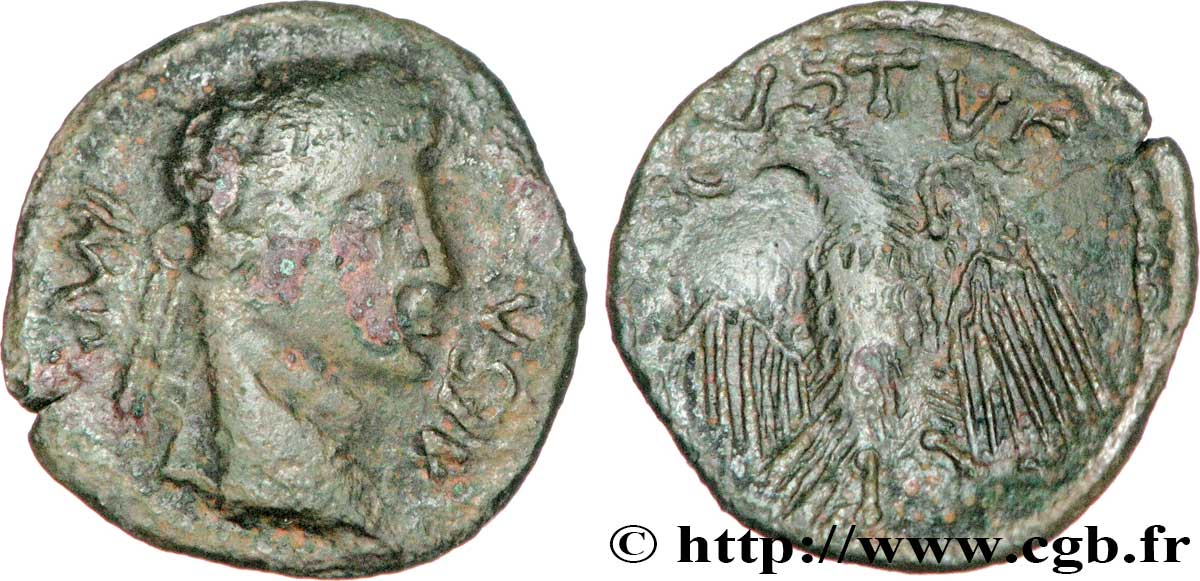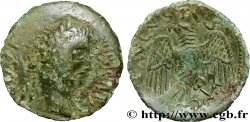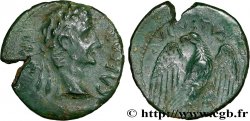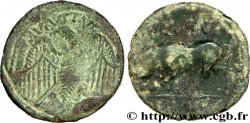bga_286107 - CENTER, UNSPECIFIED Bronze à l'aigle (semis ou quadrans), imitation
Not available.
Item sold on our e-shop (2019)
Price : 120.00 €
Item sold on our e-shop (2019)
Price : 120.00 €
Type : Bronze à l'aigle (semis ou quadrans), imitation
Date: c. 15-10 AC.
Metal : bronze
Diameter : 19 mm
Orientation dies : 1 h.
Weight : 1,98 g.
Rarity : R1
Coments on the condition:
Flan large et régulier. Avers un peu mou mais revers bien net. Patine sombre et hétérogène
Obverse
Obverse legend : IMP - CAESAR.
Obverse description : Tête laurée d’Auguste à droite.
Obverse translation : “Imperator Cæsar”, (l’empereur césar).
Reverse
Reverse legend : AVGVSTVS AU-DESSUS.
Reverse description : Aigle de face, les ailes déployées.
Reverse translation : “Augustus”, (Augustus).
Commentary
Ce type de bronze correspond plus à une monnaie gallo-romaine qu’à une monnaie gauloise.
Ces monnaies ont tour à tour été données aux Éduens, aux Lingons ou aux Séquanes, voire aux Trévires. Si le style du portrait se rapproche des émissions lyonnaises, ce type n'a rien à voir avec l'émission au taureau. Les coins semblent ajustés à 6 ou 12 heures. Pour cette série, les auteurs du Roman Provincial Coinage ont répertorié 14 exemplaires avec un poids moyen de 2,70 g.
Ces monnaies ont tour à tour été données aux Éduens, aux Lingons ou aux Séquanes, voire aux Trévires. Si le style du portrait se rapproche des émissions lyonnaises, ce type n'a rien à voir avec l'émission au taureau. Les coins semblent ajustés à 6 ou 12 heures. Pour cette série, les auteurs du Roman Provincial Coinage ont répertorié 14 exemplaires avec un poids moyen de 2,70 g.








 Report a mistake
Report a mistake Print the page
Print the page Share my selection
Share my selection Ask a question
Ask a question Consign / sell
Consign / sell
 Full data
Full data



